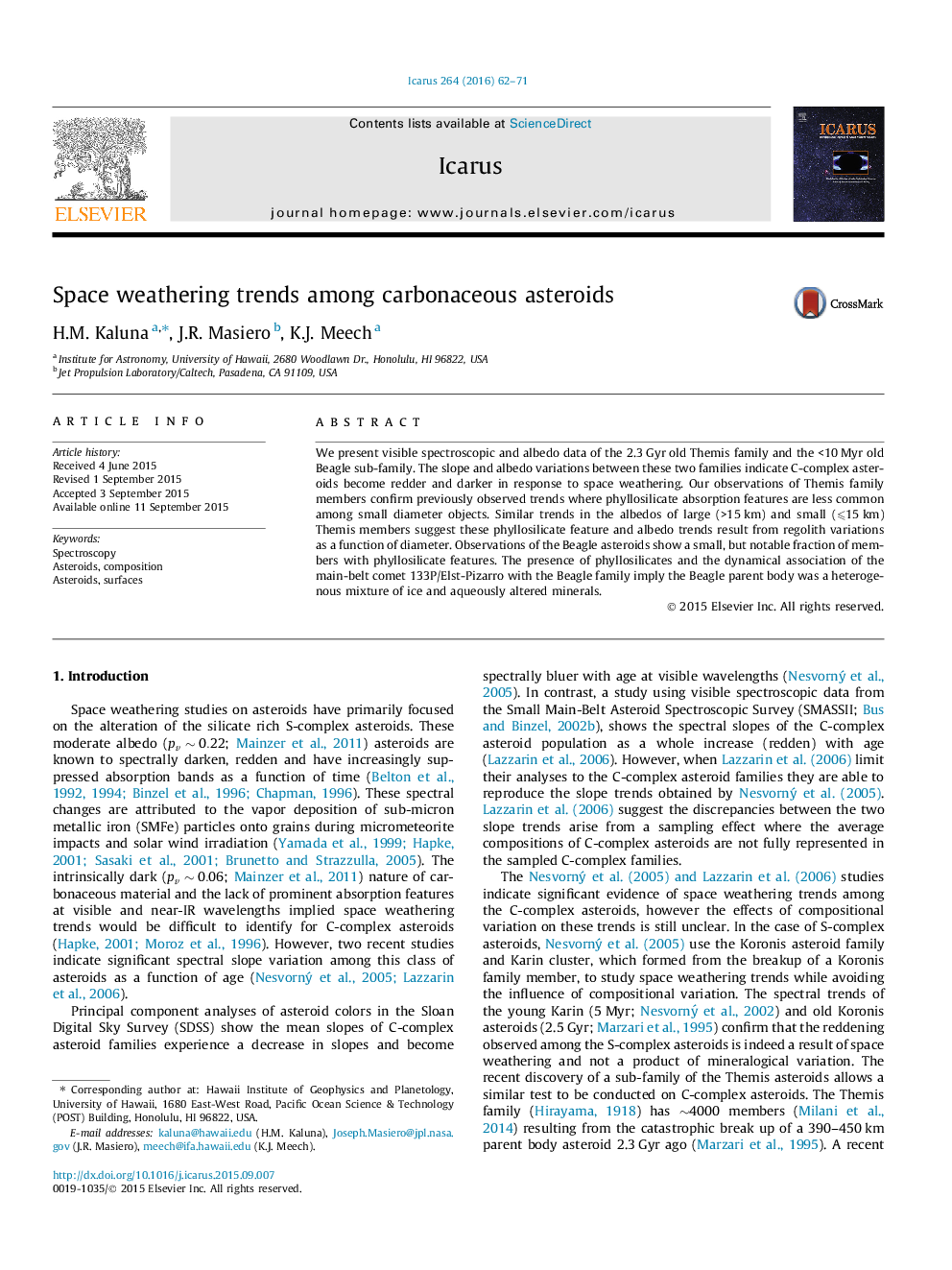| Article ID | Journal | Published Year | Pages | File Type |
|---|---|---|---|---|
| 8135838 | Icarus | 2016 | 10 Pages |
Abstract
We present visible spectroscopic and albedo data of the 2.3 Gyr old Themis family and the <10 Myr old Beagle sub-family. The slope and albedo variations between these two families indicate C-complex asteroids become redder and darker in response to space weathering. Our observations of Themis family members confirm previously observed trends where phyllosilicate absorption features are less common among small diameter objects. Similar trends in the albedos of large (>15 km) and small (⩽15 km) Themis members suggest these phyllosilicate feature and albedo trends result from regolith variations as a function of diameter. Observations of the Beagle asteroids show a small, but notable fraction of members with phyllosilicate features. The presence of phyllosilicates and the dynamical association of the main-belt comet 133P/Elst-Pizarro with the Beagle family imply the Beagle parent body was a heterogenous mixture of ice and aqueously altered minerals.
Related Topics
Physical Sciences and Engineering
Earth and Planetary Sciences
Space and Planetary Science
Authors
H.M. Kaluna, J.R. Masiero, K.J. Meech,
